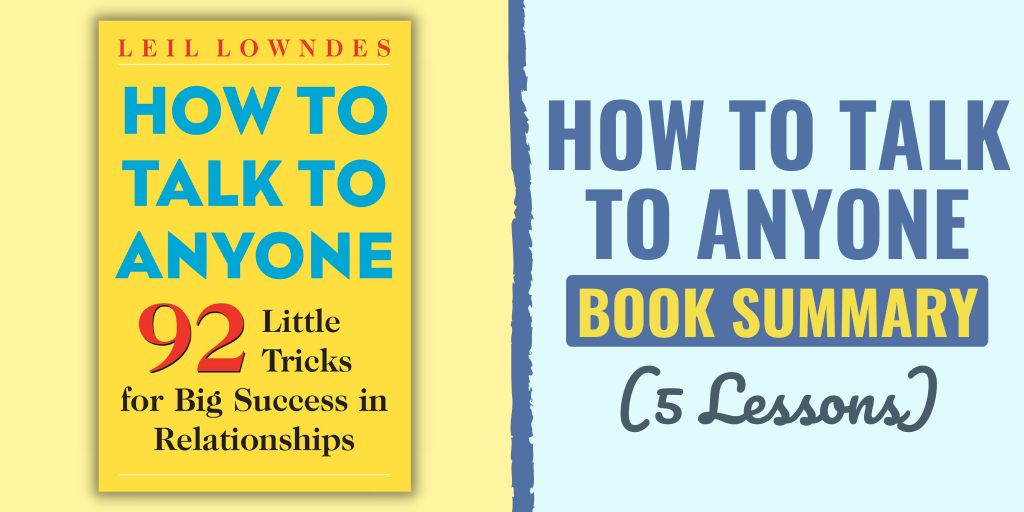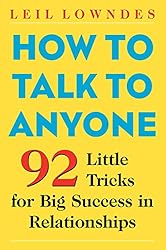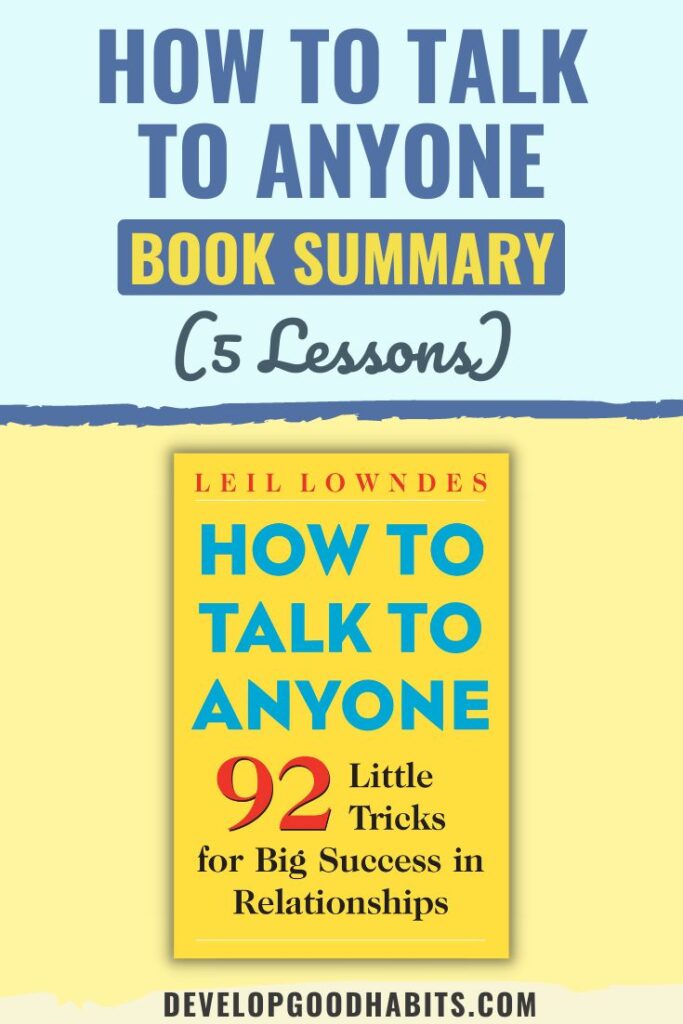There might be affiliate links on this page, which means we get a small commission of anything you buy. As an Amazon Associate we earn from qualifying purchases. Please do your own research before making any online purchase.
Imagine finding yourself in a room full of strangers, feeling at ease and confident, striking up conversations with each person, and leaving an unforgettable impression on everyone you meet. Does this sound like a dream come true?
Here’s the excellent news, Leil Lowndes' best-selling book “How to Talk to Anyone” gives you the knowledge to unlock that dream and turn it into reality.
Whether you're a seasoned social butterfly looking to polish your skills or a beginner hoping to gain confidence in social settings, “How to Talk to Anyone” offers invaluable insights that can transform your personal and professional life.
In this article, we’ll provide you with 5 lessons, to either help you study this book or decide if you should get this one for your collection!
Now, if you’d like to check out the book, you can read it on your Kindle, get a print copy, or listen to the audiobook.
Let’s begin with…
Lesson 1: Author Overview and Main Concepts
The author (Leil Lowndes) draws on her experience of incredible transformation in her life, going from a shy school teacher to a flight attendant, actress, cruise director, coach, talk show host, and speaker.
The central theme of her work revolves around improving communication skills and building successful human relationships.
Main Concepts
The central concept of this book is to provide you with 92 easy techniques to help you communicate confidently with anyone.
Some other concepts the book discusses include: making a positive first impression, mastering nonverbal communication, and building lasting connections with people through effective conversational tactics.
Overall, the book will teach you the following:
By mastering these tips, not only will your conversation skills improve, but your overall personal and professional relationships will also see significant growth.
Lesson 2: Creating a Good First Impression
Leil Lowndes stresses the importance of making a dynamite first impression as part of her blueprint for building solid relationships.
Normally, people develop first impressions within the first 3 seconds – which is not a lot of time, but also means that first impressions are much more about preparation.
Here are three quick tips to make an impact right away:
- Stellar Appearance: Your appearance is the first thing people notice. Make sure you're well-groomed and appropriately dressed, and accessorize with a unique piece that can serve as a conversation starter, like a unique brooch or colorful shirt.
- Powerful Body Language: Stand tall, make strong eye contact, and offer a firm handshake. A confident stance can make people feel like they can trust you.
- Striking Smile: A genuine, warm smile can instantly brighten up any encounter, making others more receptive to engage with you.
Now you’ve built a good first impression, it’s time to develop some rapport.
Rapport simply means that the people currently involved in a conversation understand each other and communicate their ideas well.
Here are some tips to help you establish rapport and connection:
Lesson 3: Active Listening
Listening is an often underrated part of communication, good listeners appear understanding, and empathetic and are often more pleasant to talk to. Focusing too much on what you’re going to say next instead of listening to your conversation partners is a common mistake.
As an effective listener, you enhance your relationships and understand others better. To become an effective listener, keep the following tips in mind:
Lesson 4: Learn to Read Body Language
Do you know that perhaps a whopping 93 percent of all communication is nonverbal?
Reading body language is a valuable skill that can help you understand people's emotions and feelings beyond their verbal communication. Here are some body language cues to observe and interpret:
Learning to listen well, and paying attention to other people’s body language can go a long way toward making you a master of communication, but there’s one final lesson to build on what you’ve learned.
Lesson 5: Relationship Building Strategies
In Leil Lowndes' book How to Talk to Anyone, she emphasizes the importance of being likable to both plant the seeds for new friendships and nurture existing ones.
To achieve this, you should focus on connecting with others. This can be done through:
Remember, people are drawn to those whom they find approachable and relatable.
Expanding Your Social Circle
Expanding your social circle is an essential component of building lasting relationships.
Lowndes shares some valuable tips on how to achieve this:
As you practice these strategies, your social circle will gradually expand, making you feel more connected and confident in various settings.
Final Thoughts on How to Talk to Anyone
Embrace the journey to becoming a better conversationalist by always being open to learning and growing. When you do this, you'll not only become a more confident and engaging speaker, but you'll also create more opportunities for personal and professional growth.
By taking the time to study and apply the techniques discussed in the book, you'll be well on your way to becoming a master at the art of conversation.
Now, as a reminder, if you’d like to check out the book, you can read it on your Kindle, get a print copy, or listen to the audiobook.
If you enjoyed this article, check out the links below for too complete your understanding and become a conversation virtuoso:
- Slow is Smooth and Smooth is Fast: 5 Lessons
- 7 Simple Steps to Improve Your Emotional Intelligence
- Don’t Break the Chain: Jerry Seinfeld’s Advice on Sticking to a Habit
Finally, if you want to ask better questions, then watch this short, 20-minute course to learn how to have a great conversation with virtually anyone.



